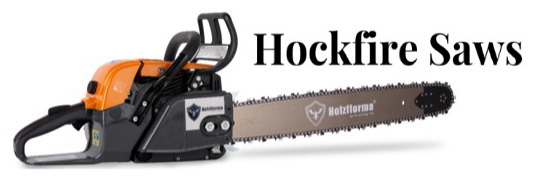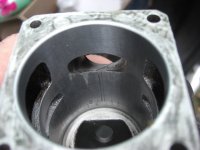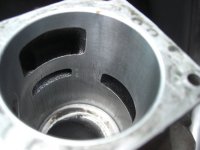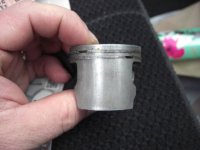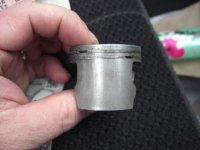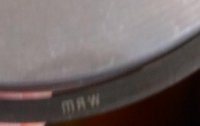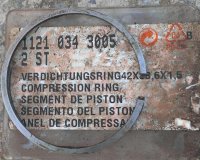When I raced bikes I would change rings quite often with a new cylinder. The rings would lap-in the high spots in the cylinder and thus have 'notches' in the rings where they wore in the high spots. The biggest area of wear was the bridge in the transfer ports. It appears on open-port cylinders that the bridge between the ports is a BIG wear area.
The Caber rings have the highest tension against the cylinder. That is very good for wearing in the high spots - as above the exhaust port the exhaust gases push the ring against the cylinder. However, once the ring drops below the exhaust port roof, it is the ring tension that pushes against the cylinder - and thus pushes against the transfer bridge area where the notches occur.
If you were going to set up an engine for power, it seems to me to use the Caber rings for several ring changes and then use a ring with less tension after the cylinder has lapped-in (it results in less internal friction). It would be good to know which manufacturers produce a good ring that has less tension than the Cabers, unfortunately I don't know who that manufacturer is.
I've used some Chinese rings. One set broke the top ring when I was running them in a Stihl 390, but it didn't cause any problems (but could have, big time). The next set of Chinese rings I put in the saw were much better quality with markings on them and are still running today with good compression.
For the best performance, it would be good to have some empirical evidence on ring quality and tension, rather than relying upon 'brand names' as the 'be all and end all' of which rings to run. Perhaps some of the distributors of AM parts could do some research which could be published.






